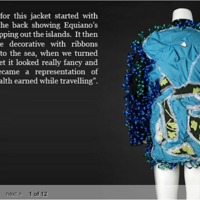
The Equiano Project Culture Clubs
Part of the Equiano Project led by Birmingham Museum and Art Gallery, the Culture Clubs were a series of outreach projects enabling contributions by local schools and community groups to the way Equiano’s story is told and the issues surrounding how his experience is represented. The four groups - Techno Elders, Hockley Youth Project, Deansfield Secondary School and King George V Primary School - worked closely with the project teams and professional artists to produce work based upon Equiano’s life story. Their work featured within the Gas Hall and Soho House exhibitions.
The Hockley Youth Project’s work was displayed in the ‘Unshackled’ exhibition at Soho House in Birmingham, once home of the industrialist Matthew Boulton. Working with visual artist Nicola Richardson, the group produced a series of suits and artworks which explore themes around Equiano’s life, particularly his success as a businessman and entrepreneur.
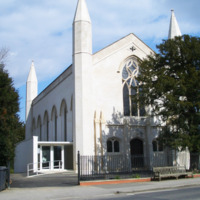
Celebration of the Bicentenary of the Abolition of the Atlantic Slave Trade
After 1825, on leaving Parliament, William Wilberforce retired to Hendon Park in Mill Hill, North London, and during his retirement built a chapel on his estate, now St. Paul's Church. St. Paul's organised a programme of events in 2007 to mark the bicentenary, including concerts by The London Community Gospel Choir and The St. Ignatius Gospel Choir. A series of exhibitions in London Borough of Barnet libraries explored Wilberforce's local connections, and visits to local schools encouraged pupils to express their understanding of slavery and abolition in art, and stressed the need to continue the work of abolitionists today. The programme also included a number of open public meetings with invited speakers exploring different aspects of Wilberforce's life and work, including his collaborations with Thomas Clarkson and John Newton. In 2008 the Wilberforce Centre was opened in the crypt space of St. Paul's.
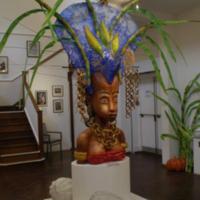
Parallel Views: Black History in Richmond
The Parallel Views exhibition and its associated community engagement programme explored the relevance of the bicentenary for communities in the London Borough of Richmond upon Thames, uncovering local associations with slavery and its abolition. It also told the parallel story of twin town Richmond, Virginia, USA, to broaden understanding of the transatlantic slave trade and the impact of its demise. The exhibition examined evidence of individuals of African origin who had come to Richmond, and residents with financial links to slavery and the slave trade, and to abolitionism. A film piece by choreographer and dance historian Dr Rodreguez King-Dorset explored the use of dance within the free Black community in London during the era of abolition. A display of contemporary artwork responded to the ideas of the exhibition. A sculpture by carnival artist Carl Gabriel linked consumers in Richmond and the conditions of production of slave-grown crops. The design was inspired by a series of workshops with local families. Artist-led workshops for children and young people led to the creation of a carnival costume piece which was included in the exhibition.
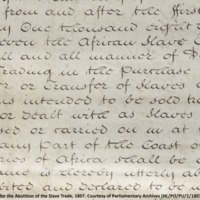
Unquenchable Spirit
Commissioned by The New Art Gallery Walsall, Unquenchable Spirit was an installation piece, informed by community engagement activities with local people, which included a month long artist residency by the artist Pauline Bailey. The community collaboration project included the local support group ACSERG (African Caribbean Social and Economic Regeneration Group). The piece consists of a circle of whipping posts with neck chains and the names of African tribes on piles of cotton sacks in the centre.
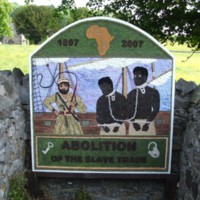
Well Dressings in Derbyshire
Well Dressing is an ancient custom unique to Derbyshire. Each year, between May and September, hundreds of well dressings are created by volunteers in Derbyshire villages. According to many sources, it developed from a pagan tradition of making sacrifice to the Gods of wells and springs to ensure a continued supply of fresh water. In the Derbyshire tradition, pictures are made for the most part of individual flower petals pressed onto clay covered boards. In 2007, many wells were dressed to mark the bicentenary. Pictured are wells in Ashford-in-the-Water, Belper, Tissington and Wirksworth, photographed by Glyn Williams.
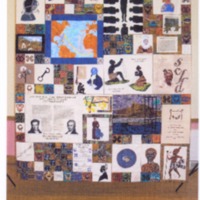
In Stitches
The In Stitches project was led by the African Families Foundation (TAFF) and brought together British, African and African-Caribbean women's quilting groups meeting in London, Liverpool, Bristol, Manchester and Birmingham. The In Stitches Quilt, designed by Janice Gunner, included 60 squares of embroidered images, texts and symbols, depicting historic figures, scenes and artefacts associated with the transatlantic slave trade and its abolition. The Quilt used several of the Adinkra symbols from Africa, originally printed on fabrics worn at funerals by the Akan peoples of Ghana. The accompanying work pack was designed to support learning about slavery based on the four themes of the Quilt: Capture, the Middle Passage, Life in the 'New World', and Proscription of Slavery. The Quilt was unveiled at City Hall in London, and then toured to the British Empire and Commonwealth Museum (Bristol), Central Library (Liverpool), Soho House (Birmingham), the International Quilt Festival (Birmingham) and Central Library (Manchester).
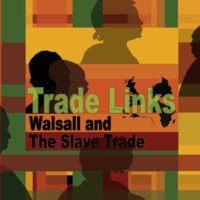
Trade Links: Walsall and the Slave Trade
An exhibition at Walsall Museum looked at Walsall's links with the slave trade, the background to the Abolition Act of 1807, and the legacies of slavery. Walsall's metal industry included chain making by local women of Cradley Heath, and the manufacture of guns used to trade for captive Africans. The exhibition was accompanied by a programme of presentations, lectures and workshops, including art sessions with local residents and the artist Pauline Bailey. Part of the wider project featured an online resource 'Abolition WYA' by Walsall Youth Arts, which encouraged young people to explore the topic of slavery and contribute poems, visual arts and music to express their views. Some of the images featured on the site are pictured here.
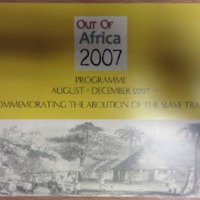
Out of Africa 2007
The African and African Caribbean Kultural Heritage Initiative (ACKHI) is a not-for-profit Black Afrikan-led community organisation, with the aim is to promote, protect and preserve the history, heritage and culture, of peoples of Black African heritage living or working in Oxfordshire. The Out of Africa programme of events in 2007 included an exhibition of books about slavery and the slave trade, which toured Oxfordshire libraries, and performances of African music and contemporary dance. The ‘Remembering Slavery’ commemorative service was held in Christ Church Cathedral. ‘Connections’ was a research project looking at Oxfordshire’s links to the system of slavery and the slave trade. ‘InTentCity’ was a visual arts project, in partnership with Fusion Arts, bringing together cultural groups, primary schools and artists to transform tents into works of art – one theme addressed was ‘Freedom’. Reflecting the legacy of the system of slavery and the slave trade, ‘Common Threads’ was an exhibition of textile work by the Textiles for Peace group, local women representing multi-cultural Oxfordshire. In ‘Ancestral Souls’, the African Women’s Art Collection (AWAC) collaborated with women of African descent to produce and exhibit 200 dolls to represent the diaspora of African peoples.
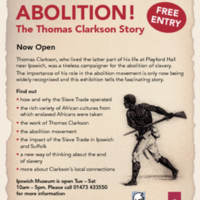
Abolition! The Thomas Clarkson Story
Colchester and Ipswich Museum Service produced an exhibition about slavery and the trade in enslaved Africans and the life of Thomas Clarkson, the abolitionist campaigner who lived the latter part of his life at Playford Hall near Ipswich. The exhibition focused in particular on the African and local history collections in the museum service. A replica mahogany travelling chest was produced as a handling box for local schools - Thomas Clarkson famously displayed a chest filled with materials from Africa and the slave trade while travelling on anti-slavery campaigns.
The exhibition was produced in collaboration with the Nia Project, and was part of a wider programme of events and outreach activities with local schools and African and Afro-Caribbean community groups. The artist Anissa-Jane worked with members of the Ipswich community to create a new art installation to accompany the exhibition.
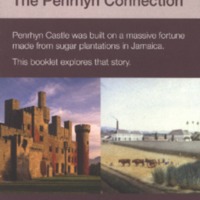
Sugar and Slavery - The Penrhyn Connection
Penrhyn Castle on the outskirts of Bangor in Wales is owned by the National Trust. In 2007, the bicentenary was marked with a special exhibition and accompanying events exploring the connections between the Castle and the fortune of its former owners, the Pennant family, built on Jamaican sugar from one of the largest estates on the island. The exhibition featured the story of Richard Pennant, 1st Lord Penrhyn, a wealthy merchant and MP for Liverpool who fought against abolition in Parliament. Some of the research was carried out by members of the local community, who were trained in archival research by exploring the Penrhyn Jamaica papers held at Bangor University, which included Richard Pennant's letters as absentee landowner.
The project created links between a local school near the Castle, Banks Road school in Liverpool and Mavisville school in Kingston, Jamaica. All three schools provided art, prose and poetry to the exhibition. Workshops were held for all visiting schools. Accompanying events included art days where a local artist worked with visitors to explore the meaning of landscape painting in the context of slavery; a Caribbean weekend; and a day of activities and workshops with a multi-faith groups of teenagers from Liverpool. A DVD of all the information gathered was given free to schools and libraries.
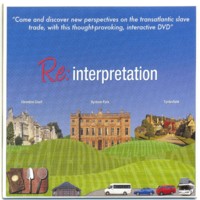
Re:interpretation
Re:interpretation was a participatory media project carried out by Firstborn Creatives in partnership with the National Trust. The project explored transatlantic slavery and its connection with three National Trust properties in South West England: Clevedon Court, Dyrham Park and Tyntesfield. It focused on the feelings and opinions of invited community groups towards those histories, who produced a range of creative responses and commentaries to their findings and also their own personal emotional responses. The project produced a multi-layered interactive exhibit, available on DVD.
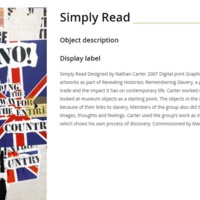
Revealing Histories: Remembering Slavery (Manchester Art Gallery)
As part of the Revealing Histories: Remembering Slavery project, Manchester Art Gallery highlighted items in its collection of fine art and decorative objects which revealed the wealth generated by the region's involvement in the transatlantic slave trade and the public's consumption of sugar, tea, coffee and tobacco. Additional special events included Tina Tamsho-Thomas performing poetry commissioned in response to the objects connected to sugar. In the exhibition 'Manchester Attitude', local community groups created a new display to express their thoughts about the legacy of Manchester's involvement in the transatlantic slave trade. Examples of these community-led artworks include 'Injustice' (with artists Colette Gilmartin and Tony Curry) and 'Simply Read' (with artist Nathan Carter), available to view on Manchester Art Gallery's website.
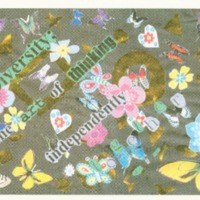
Believe in yourself...you can make change...today and tomorrow
As part of the Wilberforce 2007 programme, ArtLink Exchange, a community arts organisation in Hull, worked with local schoolchildren to produce an exhibition of artwork inspired by the bicentenary. This included artwork created by pupils from Sir Henry Cooper School and Endeavour High with artist Isaac Acheampong.
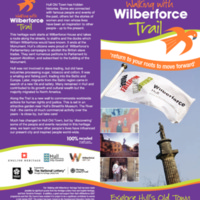
Walking with Wilberforce Heritage Trail
Part of Wilberforce 2007, the Walking with Wilberforce Heritage Trail is a journey through Hull's Old Town, via twelve important landmarks related to William Wilberforce and the theme of freedom. Along the trail is the Humanitarian Wall, at the Wilberforce Institute for the study of Slavery and Emancipation, constructed in 2006 to commemorate worldwide actions for human rights and justice. The ceramic markers, inspired by the Sankofa bird, were designed especially for the trail by three community and art groups from Hull's Africa Forum, from Hull College ceramic students and from local schools working in collaboration with two local ceramic artists. The trail was launched with a celebration of African culture led by students from Hull schools and the local Congolese community.
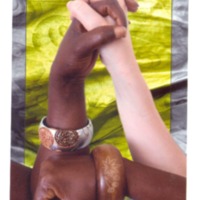
Greetings! Wilberforce Women
The Wilberforce Women project was launched by the Hull Women's Centre with the support of Wilberforce 2007. Hull based photojournalist Lee Karen Stow worked with groups of women from the twinned towns of Hull and Freetown (Sierra Leone), through photography and messages of friendship. Women from Hull were invited to think about themes of Pride, Freedom, Belief and Change and contribute a photograph on the chosen theme to send as greetings to women in Freetown. To return the greetings, women in Freetown were taught basic photography skills in order to interpret their own thoughts on the themes. A selection of the images were displayed at the Humber BBC Open Centre and on the BBC Humber website, as well as a dedicated exhibition at the Ferens Art Gallery and at the Wilberforce Institute for the Study of Slavery and Emancipation. A second stage of the project saw the images and messages being collated into a photographic book and DVD.
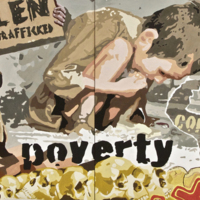
Antislavery Mural, Presentation College, Bray
Students at Presentation College, Bray, Ireland explored the issue of contemporary slavery and created a mural to raise awareness about the different forms of slavery that exist today. They then planned a workshop to present their work to their peers and parents about these issues. The mural has traveled around Ireland inspiring others to engage with the fight against contemporary slavery.
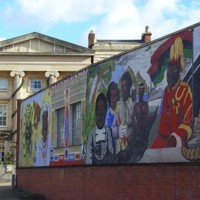
Reading Mural Black History
The project began in 1987 when Central Club approached Reading Borough Council about the possibility of a mural project. A project steering group was set up consisting of representatives of Central Club, Reading Borough Council and Berkshire County Council (who then ran Central Club as part of the Youth and Community Service). It was agreed that the project should aim to achieve a number of objectives:
· A high quality visual artwork
· Community involvement – both Central Club members and the wider community
· Reflecting African Caribbean culture, since Central Club had a high proportion of African Caribbean members
In 1988 a number of artists were interviewed, and Alan Howard was offered the commission. Alan was keen to encourage the involvement of Central Club members both in a consultative capacity but also more directly in the design and execution of the mural. An apprenticeship scheme was established, where a limited number of people were offered the opportunity to work alongside Alan and receive training in planning, design and technical skills.
The process of planning the mural involved a number of steps:
· Wide ranging discussions with Central Club members and the wider African Caribbean community
· Consultation with funders – Reading Borough Council and Earley Charities
· Consultation with neighbouring residents and businesses in the London Street area
Out of this process the theme for the mural emerged, and it was agreed that the mural should depict the positive role that black people have played throughout history, including in Reading itself. The mural therefore includes figures such as Harriet Tubman, Martin Luther King and Bob Marley as well as Reading-based people involved in founding Central Club. The final panel of the mural and the various symbols look to the future and depicts a number of tools – positive and negative – that people use to shape the future.